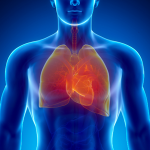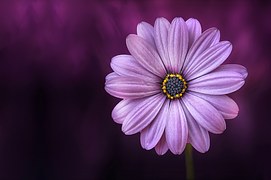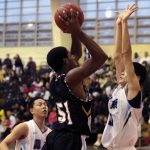Summer time. A very special time of year. Flowers are giving way to fruit. It is a time of fullness and growing maturity. The sun is at its height. The energy of the heart is its most vibrant.
 The Fire Element mirrors the relational, parasympathetic function of the ventral vagus nerve.
The Fire Element mirrors the relational, parasympathetic function of the ventral vagus nerve.
The ventral vagus supports us in resolving conflicts in the context of relationship. It provides that relational “brake” on that “fight or flight” sympathetic response to a sense of threat.
When it is functioning well, we can:
- Disagree and remain in relationship
- Sublimate primal urges to bite, kick
- Resist or oppose a person or a phenomenon without contracting or bracing against it
- Experience balance and regulation in every autonomic “invisible” function – like our assimilation of nutrients, regulation of hormones, and immune function
 The ventral vagus and the Fire Element is most available to us in the summer. It is a great time to focus on supporting its balance and regulation. Providers can cultivate ventral vagal function in their clients through the creation of a sense of safety in relationship. Acupuncturists may find that clients are especially vulnerable in their Heart, Small Intestine, Triple Burner, or Heart Protector – the organs of the Fire Element.
The ventral vagus and the Fire Element is most available to us in the summer. It is a great time to focus on supporting its balance and regulation. Providers can cultivate ventral vagal function in their clients through the creation of a sense of safety in relationship. Acupuncturists may find that clients are especially vulnerable in their Heart, Small Intestine, Triple Burner, or Heart Protector – the organs of the Fire Element.
What helps build the ventral vagus? If you are feeling tender about your capacity for connection, you might engage in activities that elicit joy and a sense of connection – and involve movement, rhythm, and the cultivation of relationship. Things like:
- Team sports
- Community choirs
- Playing an instrument in a band or orchestra
- Participating in local theatre
- Dancing with a partner or partners
Let yourself experience playing well with others!
Alaine’s Two Cents
In this podcast episode, Kathy Kain and I are interviewed by Serge Prengel of Somatic Perspectives on the integration of the Five Elements and trauma healing that we developed in our book, The Tao of Trauma. He did a great job of inviting the story in a pace and style that served clarity and understanding. It’s 30 minutes long. Let me know what you think!
As we witness an increase in hate crimes in the U.S. and abroad, I find myself called to do what I can to cultivate safety and relationship in myself and every nook and cranny of my life as an expression of world-work for peace. This model may be of help to you or your clients. Love to have you join this impulse!
Check This Out
Andrea Gibson’s dynamic performance of “Boomerang Valentine” – compelling words on the primacy of self-love.
What if “you are the best thing that ever happened to you”? Listen here: https://www.youtube.com/watch?v=0HWQ08XAYbY
Clinical Curiosity
Where is your clinical curiosity carrying you?
Send me a question or two and I will explore them with readers in this corner next month.
Q. My patient is a 52-year old Air Force Veteran, retired after over 20 years of service, and 8 combat deployments. She has suffered from chronic insomnia for years. With a strict sleep hygiene regiment, she is now able to fall asleep within 30-45 minutes, but still wakes in a startle, often between 1 and 3 am. Running used to help her deal with her stress, but a knee-injury required her to stop. She has now developed significant GI symptoms – acid reflux, gastritis, nausea. Her GI symptoms are often so severe she ends up in the emergency room with pain behind her sternum.
After our first treatment she reported that she had felt “anxious” when I placed the first needle. On reflection, I now remember her body appearing somewhat tense when I left the room after placing her needles.
What could I have done to help mitigate her stress/distress with the needling?
A. What a great question! We acupuncturists have a fabulous modality for restoring harmony, balance, and regulation to trauma survivors – but we use sharp objects and we burn moxa. Kind of an oxymoron! I recommend a few things:
- Use a simple approach for a first treatment – something like a pair of command points that support their constitution. Moving from a less invasive or intrusive treatment to a more intimate or commanding one is important to not overwhelm a vulnerable nervous system.
- Palpate the point you are considering with the guide tube and ask for their feedback. Does this seem like a helpful place for you? Palpate another equally useful point, “does this one seem better”?
- Once you have together chosen the right point to treat, again palpate with the guide tube and ask them to tell you when the point is “ready” for your insertion. These are ways to invite their awareness, their Qi, and their agency back to their body.
- I recommend staying with patients while needles are in place. Many trauma survivors have vulnerable attachment systems and are vulnerable to feeling abandoned or not cared for. They may also have experiences with the needles that you will want to monitor and attend to.
- While the needles are doing their work, this can be a great time to use the kidney/adrenal hold. Place your hand under their lower rib cage and invite their kidney to yield into your hand. As it relaxes and sinks, it’s function to signal threat by secreting adrenalin and other stress chemicals will back off and they will feel safer. The right kidney is a great choice for this woman because of its special relationship with dynamics between the kidney and the heart in acupuncture and Asian medicine.
So glad she has you!


